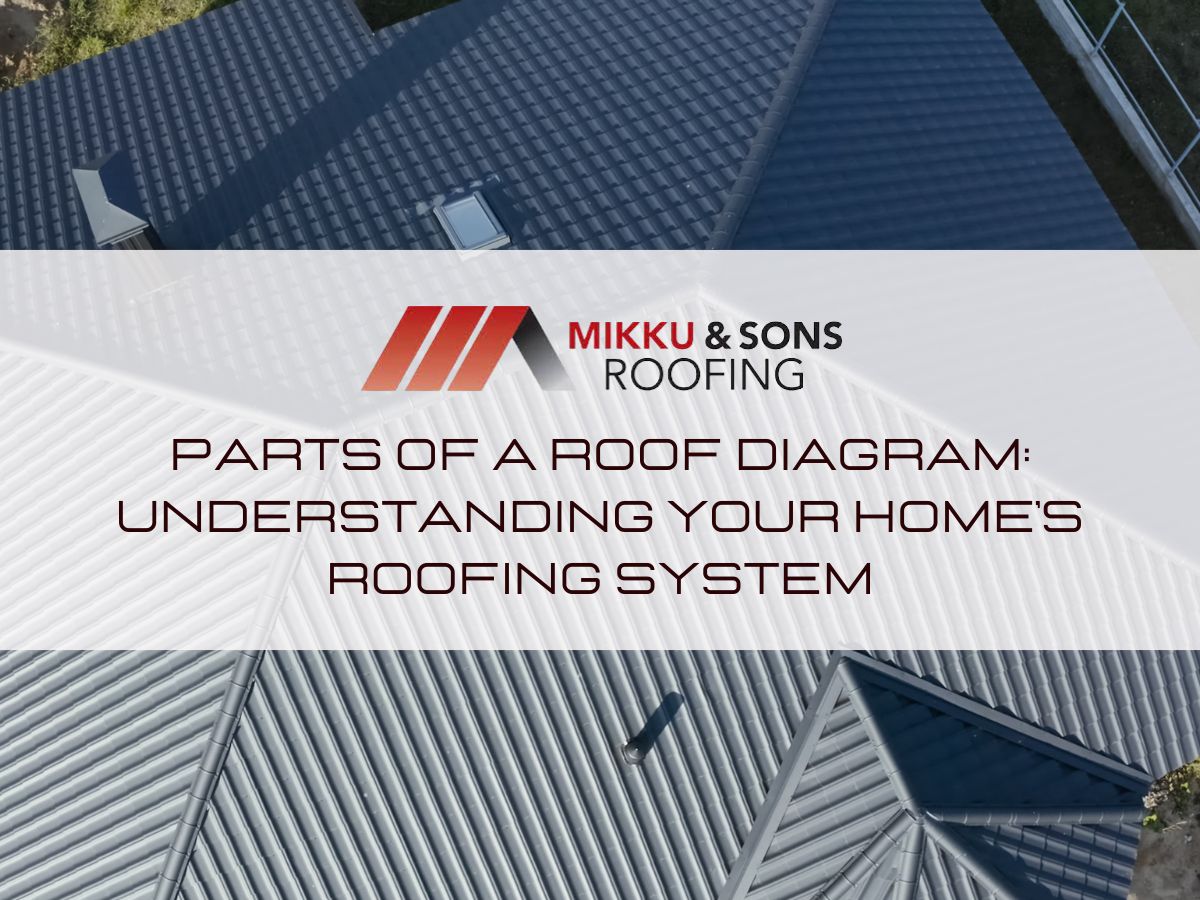
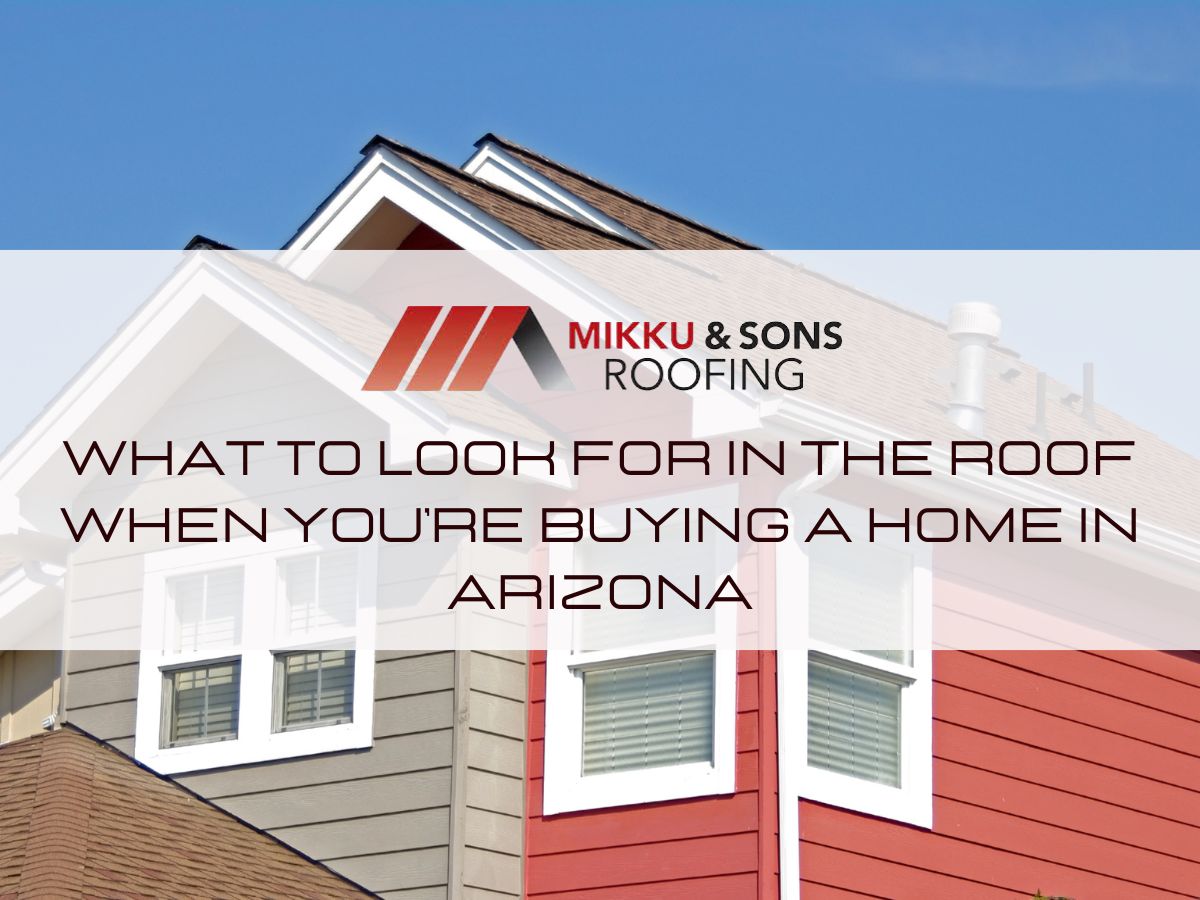
Arizona's captivating landscapes and sun-drenched allure make it a coveted destination for prospective homeowners seeking a slice of desert paradise. Yet, amidst the excitement of envisioning a life in the Southwest lies a crucial consideration—the condition of the roof.
In this guide, we delve into the essential aspects of evaluating a home's roof before purchasing in Arizona. From material quality to sustainability considerations, each facet is explored to empower buyers to make informed decisions in securing their investment against the unique challenges of Arizona's dynamic climate.
Join us as we unravel the mysteries of Arizona's rooftops, paving the way for a future defined by comfort, security, and peace of mind amidst the stunning landscapes of the Grand Canyon State.
Purchasing a home in Arizona presents unique challenges, particularly when it comes to the roof. The state's climate, characterized by intense heat, prolonged sun exposure, and sporadic but heavy monsoon rains, places significant demands on roofing materials and structures. Therefore, a thorough examination of the roof is crucial before committing to a property purchase.
Here's a more detailed exploration of the key factors to consider:
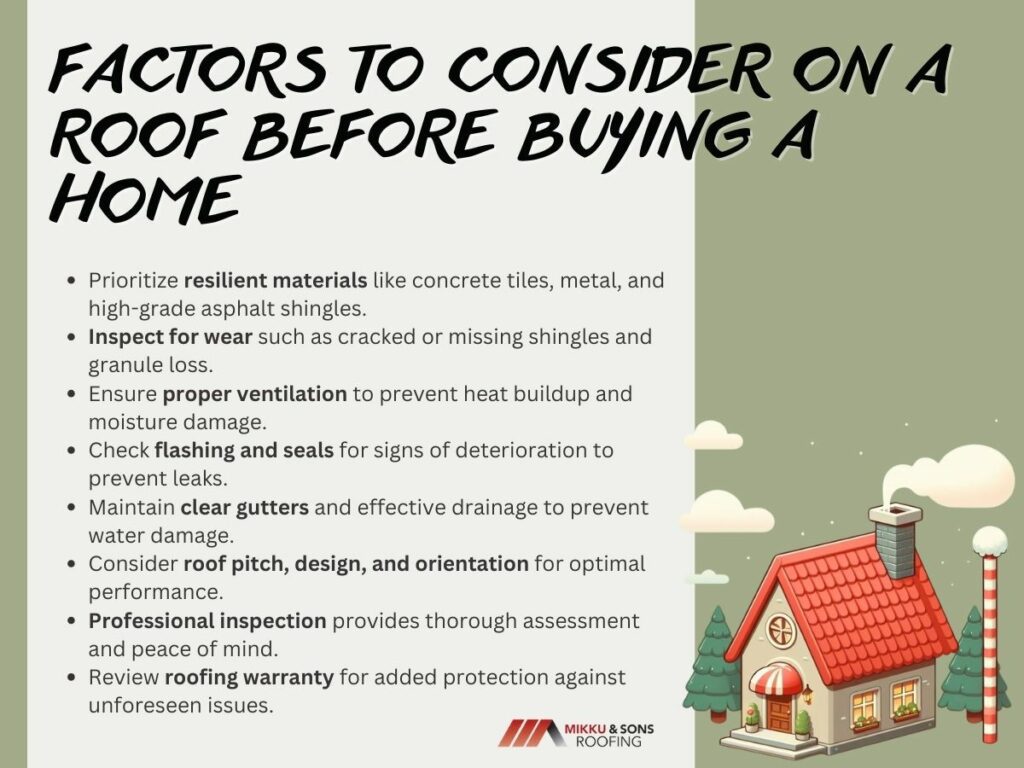
Arizona's climate demands resilient roofing materials. Concrete tiles, metal, and asphalt shingles are among the most common and suitable choices. These materials offer excellent durability and can withstand the extreme heat and sudden weather changes that characterize the Arizona landscape.
However, within each material category, there are varying levels of quality. Look for high-grade materials that come with warranties, ensuring longevity and peace of mind.
Beyond just a cursory glance, it's essential to meticulously inspect the roof for any indications of wear and tear. Cracked, curled, or missing shingles are obvious red flags that warrant attention. However, some issues may be less apparent.
Check for granule loss on asphalt shingles, which can indicate age and degradation. Additionally, examine the condition of the roof's underlayment, as deteriorating underlayment can compromise the roof's integrity.
Ventilation is paramount in Arizona, where the sun's relentless heat can quickly turn an improperly ventilated attic into an oven. Adequate ventilation not only helps regulate attic temperature but also prevents moisture buildup, which can lead to mold growth and structural damage.
Look for soffit vents, ridge vents, and attic fans, ensuring they are unobstructed and functioning correctly.
Flashing serves as a protective barrier around roof penetrations such as chimneys, vents, and skylights. It prevents water from seeping into vulnerable areas and causing leaks. Inspect the flashing closely for signs of corrosion, gaps, or deterioration.
Similarly, check the seals around roof penetrations for cracks or breaks, as these can compromise the roof's waterproofing capabilities.
Arizona's monsoon season brings intense, localized rainfall, making proper gutter and drainage systems essential for preventing water damage. Clogged or damaged gutters can lead to water pooling on the roof, which can accelerate deterioration and compromise structural integrity.
Ensure that gutters are securely attached, free of debris, and effectively channeling water away from the foundation.
The pitch and design of the roof influence its ability to withstand Arizona's weather extremes. Steeper roofs are better equipped to shed water and debris, reducing the risk of leaks and damage. Additionally, consider the orientation of the roof and whether it maximizes energy efficiency by minimizing sun exposure during the hottest parts of the day.
While a comprehensive visual inspection is essential, it's advisable to enlist the expertise of a professional roofing inspector. These specialists have the knowledge and tools to assess the roof's condition thoroughly, identifying hidden issues that may not be apparent to the untrained eye.
A professional inspection can provide valuable insights into the roof's overall health and remaining lifespan, helping you make an informed purchasing decision.
A warranty adds an extra layer of protection and reassurance when purchasing a home with a roof. Review the warranty terms and coverage carefully, ensuring it aligns with your expectations and provides adequate protection against unforeseen roofing issues.
A robust warranty can save you from significant financial burdens down the line, should any problems arise.
By meticulously evaluating material quality, signs of wear and tear, ventilation, flashing, drainage, roof design, and warranty coverage, you can ensure that your new home is equipped to withstand Arizona's weather extremes. Investing time and effort into a thorough roof inspection can ultimately save you from costly repairs and maintenance, providing peace of mind and long-term enjoyment of your property.
When purchasing a home in Arizona, it's crucial to prioritize assessing the condition of the roof, given the state's extreme weather conditions. Here are key red flags to be aware of:
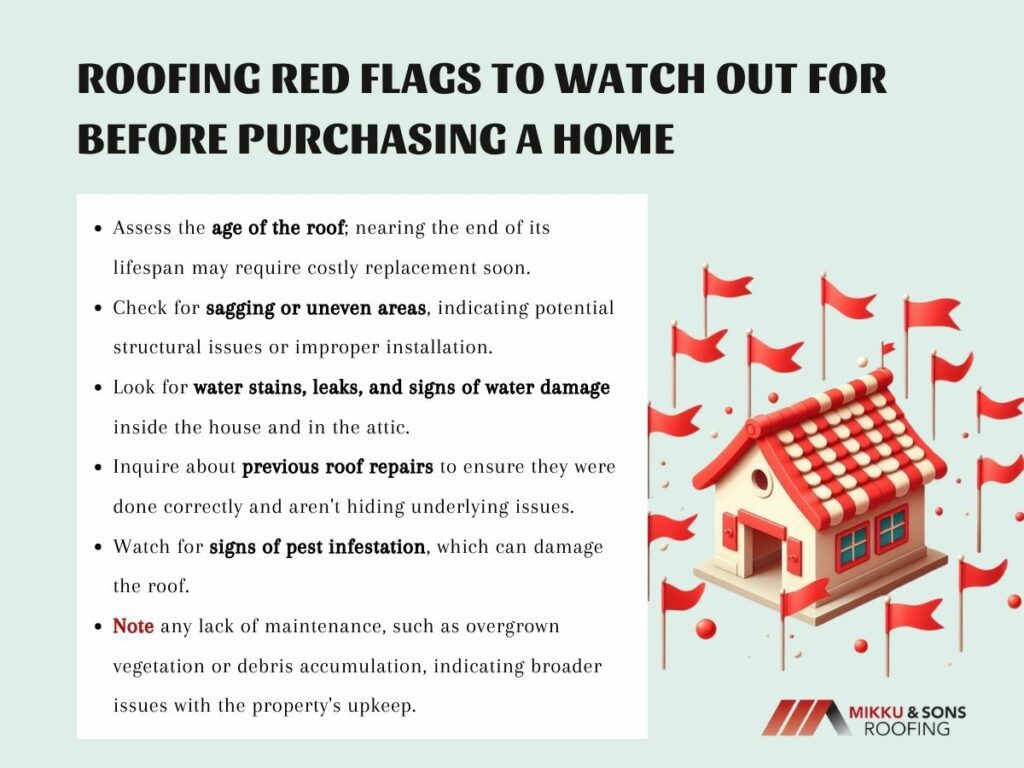
The age of the roof is a critical factor to consider. Asphalt shingle roofs typically last around 15-20 years, while metal and tile roofs can last much longer. If the roof is nearing the end of its expected lifespan, it may require replacement soon, adding a significant expense to your homeownership costs.
Sagging or uneven areas on the roof may indicate structural issues or improper installation. These areas are more susceptible to water pooling, which can lead to leaks and structural damage over time.
Look for water stains on the ceilings and walls inside the house, as well as signs of water damage in the attic. These could indicate roof leaks or inadequate waterproofing, which may require extensive repairs.
Inquire about any previous roof repairs or replacements conducted on the property. While repairs are not necessarily a red flag, they should be thoroughly inspected to ensure they were performed correctly and are not masking underlying issues.
Look for signs of pest infestation, such as nests or droppings, as pests like rodents and birds can cause damage to the roof and compromise its integrity.
A neglected roof can be a significant liability. Suppose the roof appears poorly maintained, with overgrown vegetation, accumulated debris, or visible signs of neglect. In that case, it may be indicative of broader maintenance issues that could affect the home's overall condition.
Thoroughly evaluating the roof prior to purchase can help prevent unexpected expenses and ensure the home is equipped to withstand Arizona's challenging climate. Consulting with a qualified roofing contractor or inspector can provide further insight and guidance in this process.
Here are additional considerations to keep in mind when assessing the roof of a prospective home in Arizona:
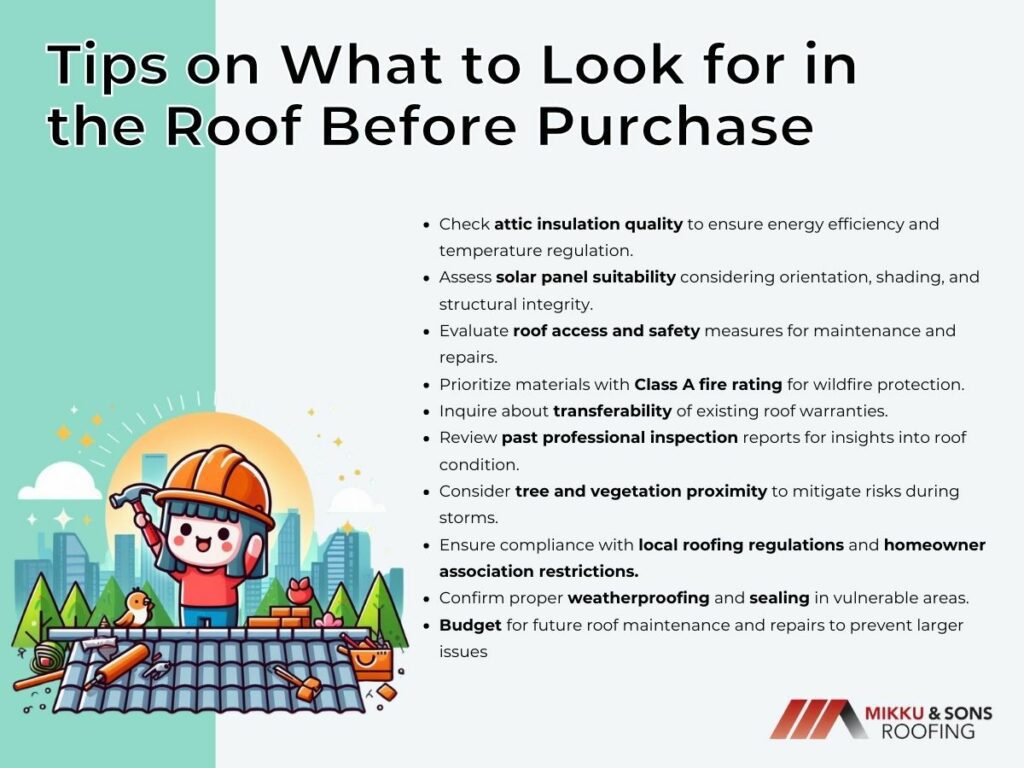
Verify the quality of attic insulation to ensure it meets current energy efficiency standards. Insulation aids in temperature regulation and reduces energy costs, which is especially crucial during Arizona's scorching summers.
Assess the roof's potential for solar panel installation, considering factors like orientation, shading, and structural integrity, which can significantly contribute to long-term energy savings in a state with abundant sunlight.
Evaluate the roof's accessibility and safety features, examining the presence of sturdy ladders, secure anchor points, and adequate barriers or guardrails to facilitate safe maintenance and repairs.
Prioritize materials with a Class A fire rating, offering superior protection against wildfires, an essential consideration given Arizona's wildfire risk.
Inquire about the transferability of any existing roof warranties to ensure continued coverage for potential issues post-purchase.
Obtain and review any past professional roof inspection reports for insights into the roof's condition, maintenance needs, and projected lifespan.
Consider the proximity of trees and vegetation to the roof, as overhanging branches may pose risks during storms and contribute to debris accumulation.
Familiarize yourself with local roofing regulations and potential homeowner association restrictions to ensure compliance with applicable guidelines.
Confirm proper weatherproofing and sealing to withstand Arizona's climate, paying attention to vulnerable areas like roof valleys, eaves, and transitions between materials.
Allocate funds for future roof maintenance and repairs, anticipating routine upkeep costs to prevent larger issues down the line.
By incorporating these additional considerations into your evaluation, you can make a more comprehensive assessment of the roof when purchasing a home in Arizona.
Buying a home in Arizona is exciting, but it's crucial to assess the roof thoroughly beforehand. Here are key benefits:
Checking the roof before buying a home in Arizona ensures financial protection, investment security, safety, peace of mind, and upgrade opportunities, facilitating a successful transaction.
In the vibrant tapestry of Arizona's housing market, the roof stands as a sentinel, guarding against the elements and preserving the sanctity of the home within. By meticulously evaluating material quality, structural integrity, regulatory compliance, and sustainability considerations, prospective buyers can navigate the complexities of the state's climate with confidence.
With each aspect of the roof carefully considered, buyers can make informed decisions that ensure long-term investment security and peace of mind. As they embark on their journey of homeownership amidst Arizona's stunning landscapes, they can rest assured that their abode is not just a shelter, but a fortress against nature's whims.
In closing, by prioritizing the condition of the roof, buyers pave the way for a future defined by comfort, security, and serenity amidst the captivating landscapes of the Grand Canyon State.
